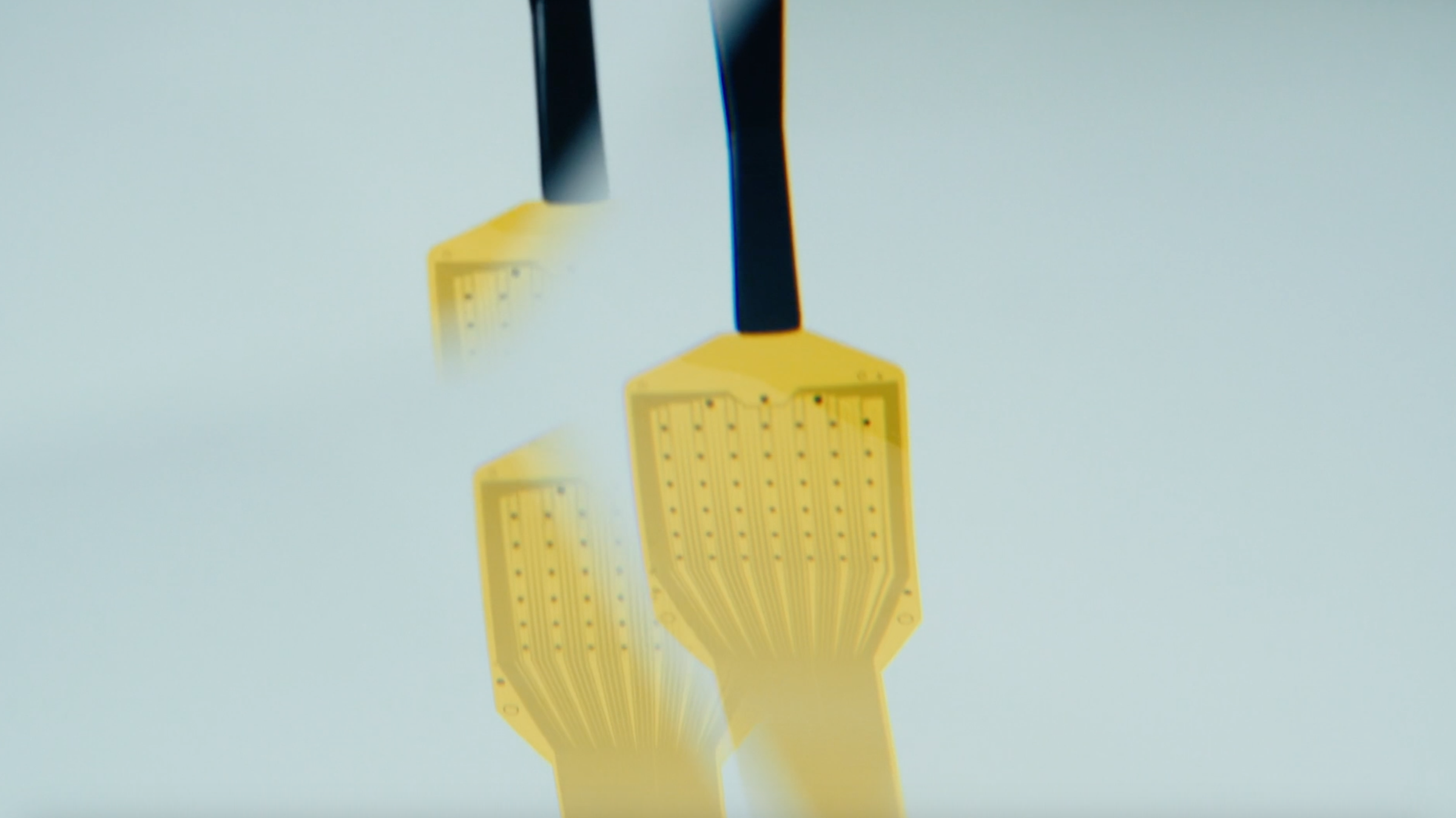The Layer 7 Cortical Interface
A thin film microelectrode array that is engineered to conform to the brain's cortex without damaging tissue. Thousands of channels can be delivered anywhere on the brain's surface using our patented, minimally invasive insertion method.
A modular system of flexible microelectrodes designed for minimally invasive and reversible surgery
Advanced brain–computer interfaces require collecting and processing large amounts of neural data, potentially spanning multiple brain regions. Our Layer 7 Cortical Interface provides these capabilities while prioritizing patient safety.
Minimally Invasive
Our surgical technique will allow us to implant electrode arrays on the brain’s surface. The surgery is designed to be reversible.
Flexible
Our electrode arrays are engineered to conform to the cortical surface.
Modular
Multiple arrays can be combined to cover large regions of the brain.
Cutting-edge
We're developing machine learning software to translate neural data into computer code.
Bidirectional
Electrodes can both record and stimulate, allowing precise communication with the brain.
Thin Film Technology
Each microelectrode array comprises 1024 electrodes ranging in diameter from 50 to 380 microns, connected to a customized hardware interface.
- Array is 1/5th the thickness of a human hair.
- The slit for insertion is less than 1mm thickness.
- Array has 600x greater electrode density than standard cortical arrays.
- Slit insertion method.
High Resolution Data
When the brain processes information or initiates an action, it generates electrical signals. Our thin film technology can capture these signals at micron scale, providing an unprecedented view into the brain’s activity. Think of the leap from standard television feeds to high-definition.
Minimally Invasive Surgery
The Layer 7 Cortical Interface is a scalable brain-computer interface (BCI). Using a cranial micro-slit technique, the insertion procedure is designed to be minimally invasive. The array conforms to the surface of the brain, engineered to be reversible, causing no damage to the brain.
